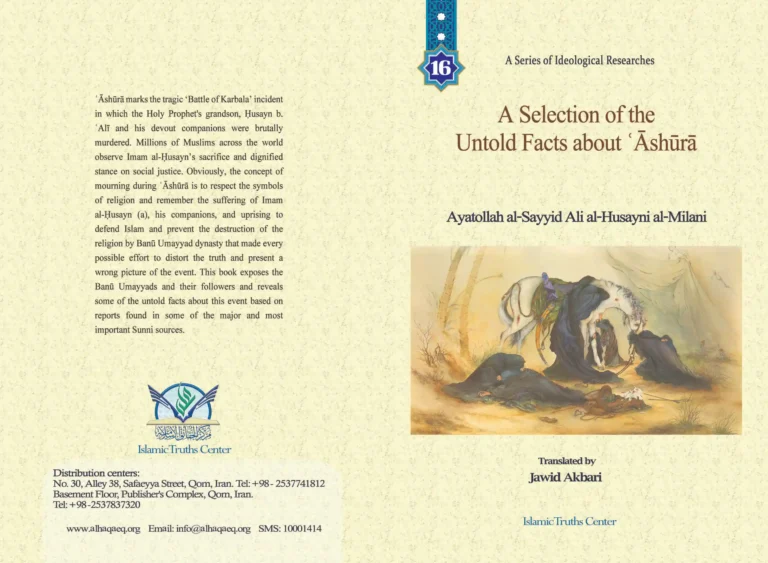Foreword
The event of Karbala and the martyrdom of Imam al-Ḥusayn, peace be upon him, are among the most important events of human history impacting Muslims’ beliefs and having a wide array of dimensions which have always been profound and thought-provoking for scholars. ʿᾹshūrā marks the climax of Muharram, marking the martyrdom of Prophet Mohammad’s grandson, Imam al-Husayn, peace be upon him, in the Battle of Karbala nearly 1400 years ago.
Imam Husayn’s martyrdom is the source of an enduring moral lesson for Muslims and an inspirational example of sacrifice to people all across the globe.
Generally speaking, the event of ʿᾹshūrā can be studied from three dimensions:
- Roots and causes of the event of ʿᾹshūrā
- The incidents that took place in the event of Karbala
- The impacts and aftermaths of this event in the history of Islam and human societies.
Each of these dimensions has its various aspects which will be dealt with in this study. Additionally, the book will deal with some specious arguments, questions and doubts cast about the event of Karbala with special conclusions drawn from the discussions on key issues concerning the event.
This study benefits from the most important and the oldest documents as well as first hand historical, exegetical and scriptural sources belonging to Ahl-e Sunnah (Sunnites). There are only few references provided from important Shiite religious and historical sources.
It is worth noting that Shiite Muslims refer to Sunni sources for two main reasons:
- To deal with doubts and accusations leveled by some fanatic individuals from the Sunni branch of faith. This has to be done by making use of their books which will leave them with no option but to accept what has been recorded in their own books.
- To allow everyone to know that these events are reported in both Sunnite and Shiite books.
It goes without saying that Sunni scholars have reported all the major events in the history of the Ahl al-Bayt, peace be upon them. However, the writer maintains that they have turned a blind eye to the details of two major events the first being the story of Fāṭima al-Zahrā, peace be upon her, and second being the event of ʿᾹshūrā.
It has to be made clear that we do not generally consider and judge every single report and allegation in their books as genuine and sound but we provide references from the opponents’ books to silence them; otherwise Shiite scholars have made great efforts to narrate, record and preserve the facts. The accounts furnished by them take precedence over the accounts provided by others.
I hope that this humble research will be informative and helpful to researchers and those who seek to understand the truth about the important events in the history of Islam.
Islamic Truths Center


